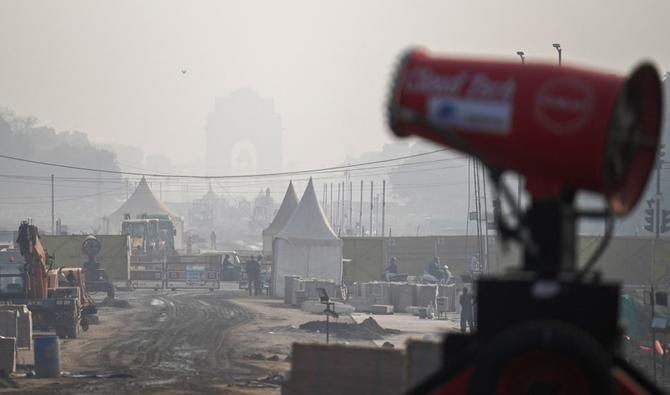Even as its capital is often plunged in a toxic fog, India led the charge to weaken commitments against coal at the COP26 summit, privileging, according to experts, its economic growth at the expense of the future of the planet.
The third largest emitter of greenhouse gases has agreed with China to tone down the wording on fossil fuels at the Glasgow conference, forcing participants to a compromise: the climate agreement commits to a ” reduction ”instead of an“ exit ”from coal.
The reasons for this Indian resistance to a more ambitious fight against polluting fuels are to be found on the side of its need for cheap energy, to fuel a growing economy and lift hundreds of millions of people out of poverty.
“We have a large population that has still not reached a basic minimum standard of living,” Samrat Sengupta, climate change specialist at the Center for Science and the Environment, based in New Delhi, told AFP.
Coal consumption has almost doubled in the last ten years and this energy produces 70% of India’s electricity.
The government has only backed down regulations for coal factories and announced a series of mine auctions last year to boost domestic production.
Admittedly, Prime Minister Narendra Modi has pledged to get his country out of coal, but he told delegates in Glasgow that India is only aiming for carbon neutrality by 2070, ten years after China and 20 years later. other major CO 2 emitters .
Without strong swift action, experts fear an increase in India’s emissions in the coming years, undermining global efforts to stem global warming and its catastrophic consequences.
“India is extremely vulnerable to climate change, with an increased risk of disrupting monsoon systems, heavy rains and extreme heat,” warns Matthew England, climatologist at the University of New South Wales.
Liability of historical polluters
The consequences of India’s addiction to fossil fuels are already clearly visible, with a thick gray fog enveloping New Delhi and its 20 million inhabitants each year in winter.
On the same day as the COP26 agreement was finalized, New Delhi was closing its schools for a week in order to prevent children from going out.
This toxic fog causes millions of deaths in India each year, and a recent University of Chicago study estimated that air pollution reduced the life expectancy of 40% of Indians by nine years.
But the goal of increasing solar energy production from 100 GW to 500 GW by 2030 “is a huge goal and very difficult to achieve,” says Sengupta.
“It requires making a lot of cheap finance and technology available.”
The country lacks high-tech capacity to meet demand for solar panels, and has to rely on expensive imports of their components.
The attempt to encourage domestic production of solar technology by increasing import taxes has resulted in the cost of renewables rising.
India has long demanded that historic polluters, such as the United States and Europe, provide the technical expertise and funding needed to tackle climate change.
Developing countries “have the right to a responsible use of fossil fuels,” the Minister of the Environment repeated on Saturday to delegates at COP26.
Bhupender Yadav argued that countries bearing little historical responsibility for climate change should not be held to the same standards as the largest emitters per capita.
“In such a situation, how can we expect developing countries to promise to abandon coal and fossil fuel subsidies?” He asked.
The watered down text of COP26 was adopted with great reluctance by other countries, eager to conclude the agreement after two weeks of marathon negotiations.
The Indian argument angered other developing countries, including the Pacific islands at the forefront of risk of rising sea levels.
The Attorney General of Fiji, Aiyaz Sayed-Khaiyum, expressed “not only our astonishment, but also our immense disappointment with the way in which this was introduced”.

